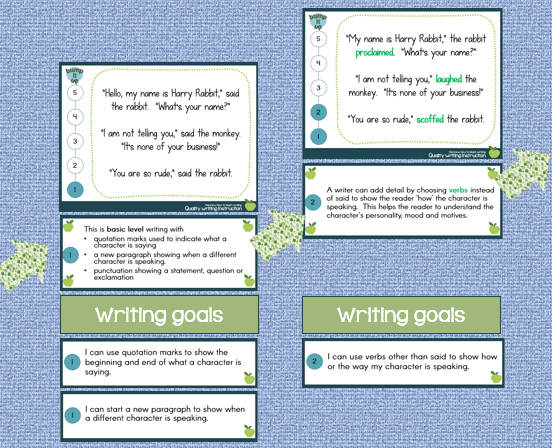An Introduction to Bump It Up Resources
Part 1 of 3

By KELLIE
‘Bump It Up’ has become a widely popular phrase within Australian school settings. This post, first in a three part series, explores Bump It Ups, how they support students’ writing development and the questions to ask when purchasing, designing or borrowing Bump It Up resources.
What are Bump It Ups?
Bump It Up resources provide a visual scaffold for students to make it clear what is expected of them to successfully meet the expectations of the curriculum. While they are commonly used effectively as Bump It Up walls, or Learning Walls, they do not have to be displayed on classroom walls. Many classrooms, especially in secondary school settings, have opted for digital versions of Bump It Ups that students can access to monitor their progress.
Bump It Up resources that demonstrate writing outcomes are essentially a writing continuum worded in a way that students can understand.
The continuum demonstrates the progression of learning, or improvement, that occurs as a piece of writing becomes increasingly refined and precise, usually in relation to an assessment task.

How do Bump It Ups help students’ writing development?
Bump It Up resources are most effective when students use them to determine where they are currently at with their writing, and can look to where they are going. If the resource makes it clear what it is their writing is missing, or what they need to refine, they can then determine what they need to do next to improve their writing.
The ultimate goal of Bump It Ups is for students to use them independently to monitor their progress towards proficiency, and above. To achieve this, students ask guiding questions about the quality of their work. These questions are usually informed by evidence-based research models such as those developed by Hattie and Timperley (2007), Black and William (2009) or variations of these questions.
- Where am I going?
- How am I going?
- Where to next?
Hattie and Timperley (2007)
- Where the learner is going.
- Where the learner is right now.
- How to get there.
Black and William (2009)
Both of these models are based on the belief that the feedback is key to student progress.
Bump It Up resources provide one way for students to receive feedback on the quality of their writing and their progress towards achieving their writing goals. Current research has revealed that feedback has great potential to improve student outcomes in schooling. This explains why Bump It Ups and similar resources are being embraced in Australian schools.
Bump it Up Walls assist students by
- showing what quality writing looks like according to the teaching and learning focus and success criteria so they know where they are going.
- providing a measure for students to determine where they are at with their writing.
- providing a guide to students to know what to do next to improve the quality of their writing.
- giving them clear examples so they can determine when they have achieved the success criteria and reflect on their progress.
5 important questions to ask about Bump It Up resources
There are many different variations and versions of Bump It Up resources available for teachers. Like all products, there is a wide range in the quality and effectiveness of the resources.
When you are choosing a resource to support your students’ writing development, or you are reviewing the resources they are already using, the most important questions to ask are:
- Does this resource align with the Australian Curriculum?
- Does it align with the expectations and writing demands of the assessment task for the unit of work I am teaching?
- Is the progression of writing improvement logical and sequentially appropriate?
- Will this resource enable my students to monitor their own progress independently?
- Will the resource on display in my room overwhelm any, or all, of my students?
Part 2 of our ‘How to make the most of your Bump It Up resources’ series explores how to design a Bump It Up resource aligned to students’ writing outcomes.
Part 3, and the final in the series, examines what teachers can do to optimise student engagement with Bump It Up resources. This blog is supported by video demonstrations.
Discussions and questions are encouraged in “The Lounge”, Quality Writing Instruction’s Facebook group.
References
Black, P & William, D, 2009, ‘Developing the theory of formative assessment’,
Educational Assessment, Evaluation and Accountability, vol. 21, no. 1, pp 5-31.
Frey, N, Fisher, D & Hattie, J, 2018, ‘Developing Assessment-Capable Visible Learners, Grades K-12’, Corwin, California.
Hattie, J & Timperley, H, 2007, ‘The Power of Feedback’, Review of Educational Research vol. 77, no. 1, pp 81-112.
Sharrat, L, 2019, ‘Clarity. What Matters MOST in Learning, Teaching and Leading’, Corwin, California.
